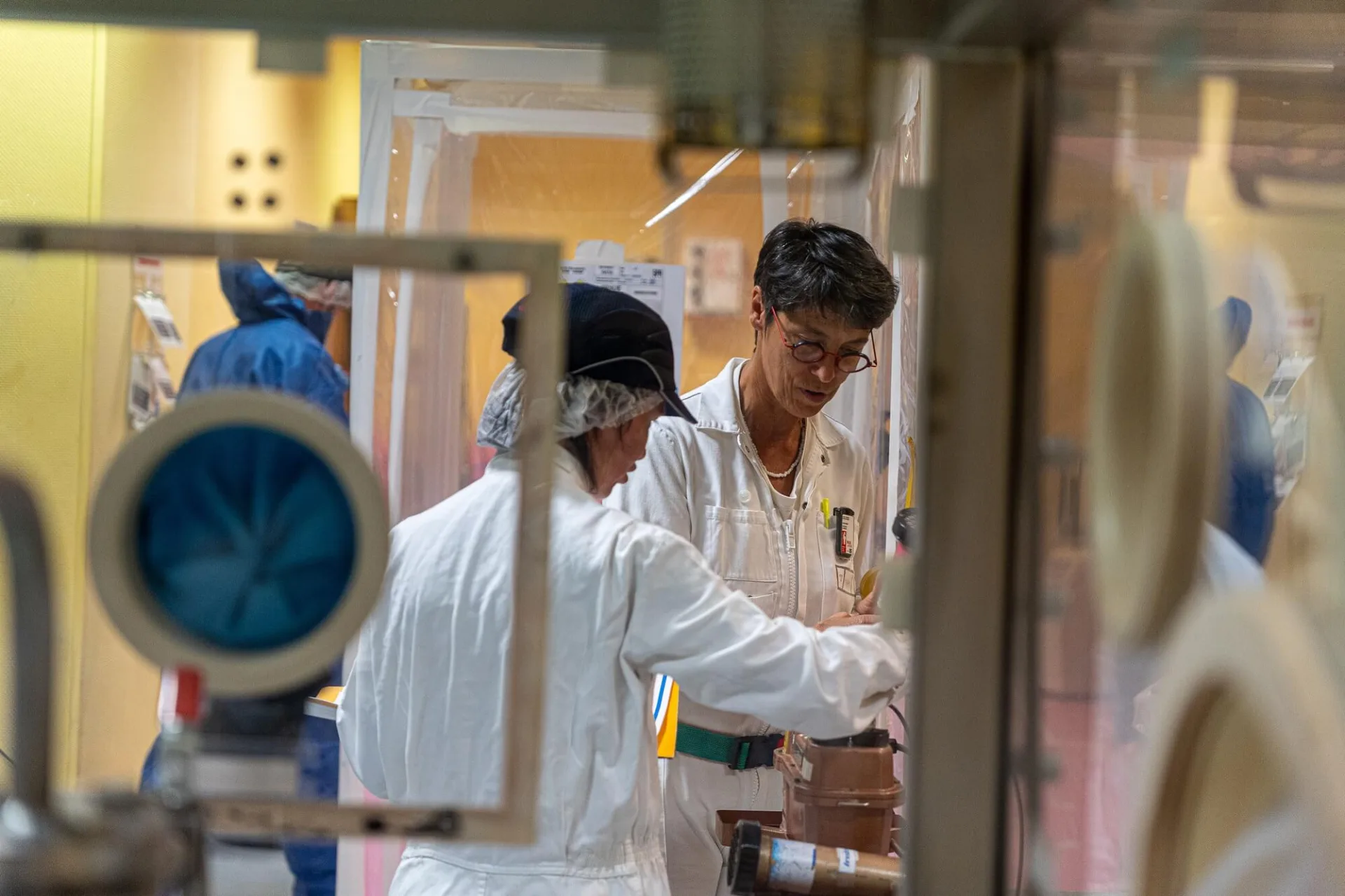Published on 26 May 2025
Reading time: 5 min.
GANIL (or Large Heavy Ion National Accelerator) is one of the world’s biggest research institutes for nuclear physics and related subjects based in the Calvados area. Hundreds of users come to Caen every year to conduct experiments that will unlock the secrets behind matter and the universe.
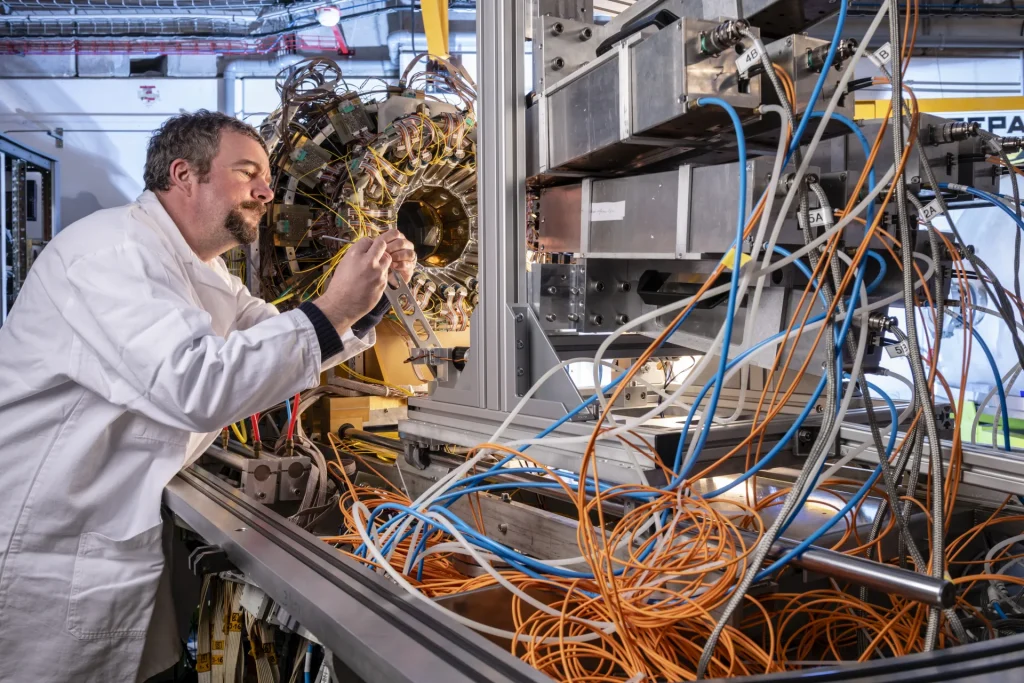
An incredible facility lies behind the Campus Jules Horowitz gates in Caen (between CHU hospital and University Campus 2): GANIL (or Large Heavy Ion National Accelerator). Its cyclotrons and linear accelerator see dozens of pioneering science experiments conducted here every year (8 in nuclear physics, 48 covering several subjects, 23 for industrial applications in 2023).
An extensive field for fundamental and applied research
The science facility to study heavy ions in the Normandy area got the go ahead in 1976 when Michel d’Ornano was the French Minister for Industry. Experiments began here in 1983. Over 40 years on, GANIL still sets the benchmark for French research into nuclear physics. It’s one of the world’s biggest laboratories in this field of expertise.
“Fundamental research in nuclear physics is still at the heart of what we do here, but over time we’ve begun exploring new areas of research such as nuclear astrophysics, astrochemistry, irradiated materials, nanostructures and more with CIMAP, the Centre for Research into Ions, Materials and Phototonics, which houses some of this research alongside GANIL. GANIL has also ventured into applied research, specifically in energy and nuclear medicine,” says Gilles de France. The head of the physics department first joined GANIL in 1997 as a research leader.
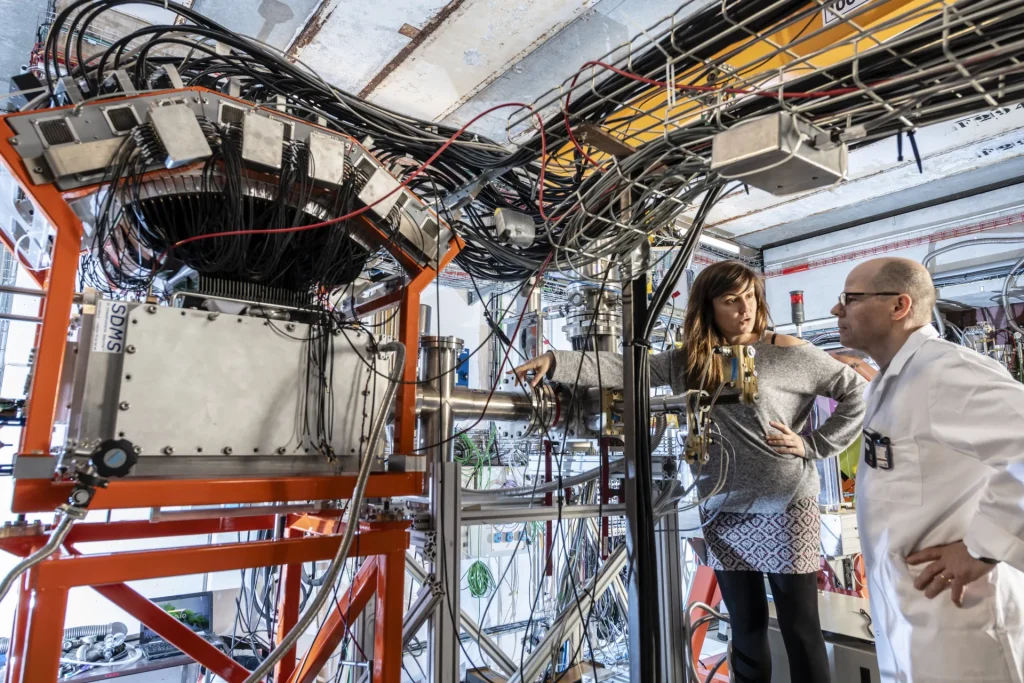
GANIL in figures
- Approximately 300 employees including 60 researchers and 200 engineers and technicians
- Annual operating budget of 18 million
- Over 300 users and a hundred scientific visitors conducting experiments every year
- Up to 80 experiments per year
- 4600 hours of beam time available
- Over a hundred science publications every year (121 in 2023)
(Source: GANIL annual report for 2023).
Cutting-edge facilities
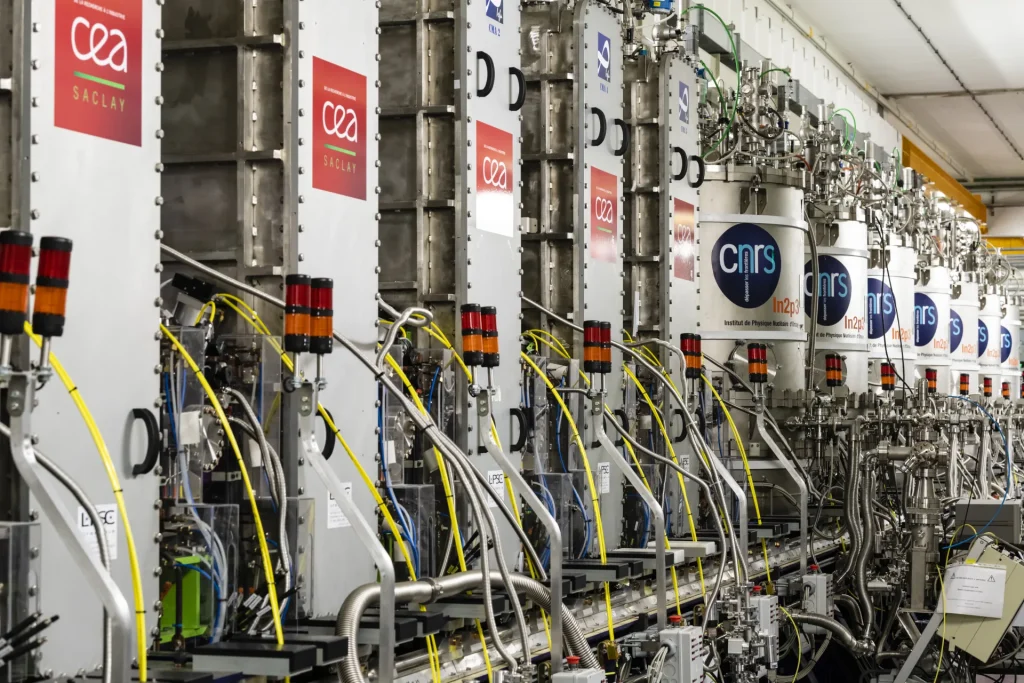
GANIL is home to several cyclotrons and a dozen experimental areas to accelerate ions and study the subject. The first cyclotrons are capable of particle acceleration, from carbon to uranium. A fifth cyclotron launched in 2001 and can accelerate the radioactive ions produced by the first cyclotrons in a cascade system.
A new installation joined GANIL in 2019: SPIRAL 2. It has a linear particle accelerator (LINAC) and three new experimental areas. Its very high-intensity beams capable of accelerating light, heavy and eventually very heavy ions, mean SPIRAL 2 has broadened the possibilities of physics research on-site even further.
GANIL stands out for its ability to provide users with both a wide range of accelerated ion beams and state-of-the-art detection systems to analyse data.
Gilles de France
GANIL, a unique facility in the world of research
- GANIL is a GIE (group of economic interest) and part of the CEA (French Atomic Energy Commission)/CNRS (French National Centre for Scientific Research). This unique status in the world of research was set in stone in 1976 to streamline the facility’s construction and management.
- It’s recognised as an IR*, a research infrastructure of national interest, meaning it receives funding from the French Ministry for Education and Research.
- GANIL is one of just two nuclear physics laboratories approved by ESFRI in Europe. The European forum supports a strategy-led approach to sharing resources among world-class research facilities.
GANIL, a leading infrastructure used by international researchers
Researchers from laboratories and universities all over the world come to Normandy every year to conduct experiments using GANIL’s ion resources. The facility has a community of one thousand regular users. GANIL also sells 10-15% of its beam time to businesses (with their own room and staff) to study real-world applications (aerospace, medicine etc.). The scientific platform also helps train dozens of students every year. 2023 alone saw GANIL host 38 Master’s students, 19 PhD students and 16 postdoctoral researchers.
Over the last few decades, GANIL has set the scene for dozens of major scientific discoveries: mass measurement of 100Sn, two-proton radioactivity, discovery of atoms and hydrogen -7, the most exotic nucleus ever observed, the unique structure of silicon-34 and so much more. The facility’s applied research has also made major advances, especially in the field of nuclear medicine. “For example, we’ve managed to produce radionuclides such as astatine 211, an alpha particle emitter that targets biomolecules to treat certain types of cancer cells. GANIL is blazing a trail in this field,” says the head of physics.
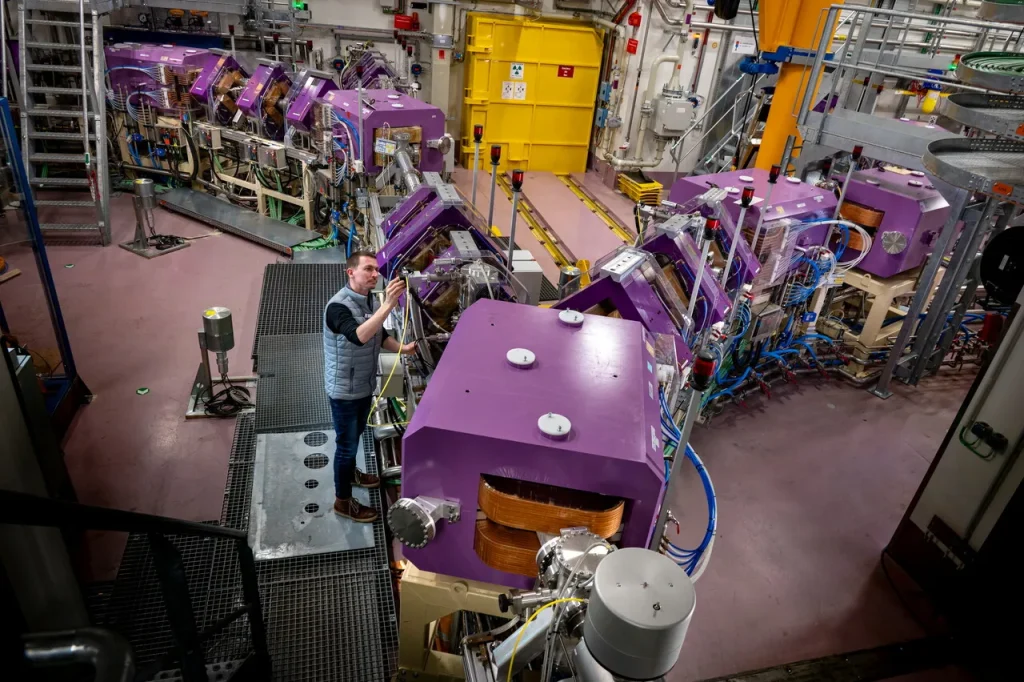
GANIL hosts world-class scientific events in Normandy
The major scientific events (GANIL Colloque, GANIL Community Meeting, etc.), conferences and workshops hosted by GANIL every year also fly the flag for Normandy. For example, GANIL is hosting the next International Particle Accelerator Conference (IPAC) in Deauville in 2026. 1500 researchers, scientists and engineers from all over the world are expected to attend.
GANIL is expanding with new installations and ambitious projects
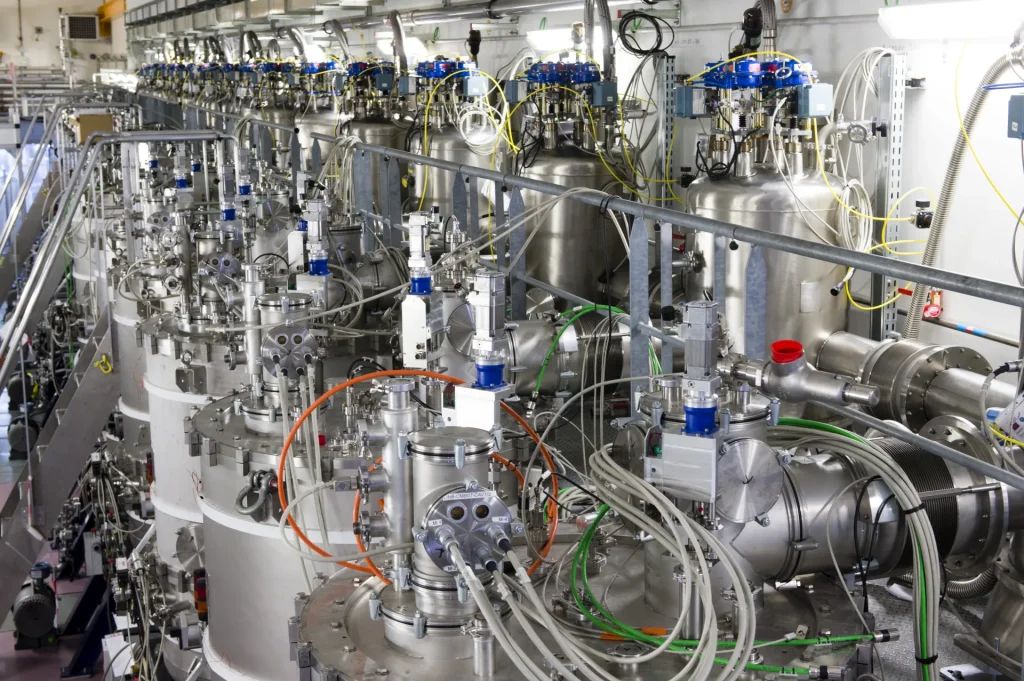
GANIL has reached a turning point. It’s launched the CYREN project to renovate and prolong the lifespan of its long-standing cyclotrons whilst the new SPIRAL 2 experimental areas are gradually being set up. The first one is already up and running: Neutrons For Science (NFS) to produce fast neutrons. The second should begin the test phase in late 2025 or early 2026: Super Separator Spectrometer (S3) to study unusual phenomena using very high intensity stable beams. The third experimental area will begin operations in 2026-2027: DESIR to research low-energy exotic nuclei.
In the meantime, GANIL is also working on the NEWGAIN (EquipEx+) project, a new injector that will produce the world’s highest ion beam intensities. Fundamental new breakthroughs are expected from these new facilities. ““We’ll explore how to roll out our new science project nationwide and worldwide over the next few years. We’ll also plan what the future holds for GANIL in the decades to come. “
Pioneers in Normandy
- Calvados
- Healthcare industry
- Innovation
- International
Cyceron: a centre for innovation in healthcare
Published on 16 Sep 2024
Reading time: 2 min.
- Eure
- Green Normandy
- Healthcare industry
- Innovation
- International
Aptar Pharma: a pioneering group
Published on 07 May 2024
Reading time: 3 min.
- Calvados
- Energie
- Green Normandy
- Innovation
- Research
Biofuel production is being revolutionised by the T.H2 project in Normandy
Published on 30 Sep 2024
Reading time: 7 min.
- Healthcare industry
- Innovation
- Seine-Maritime
- Start-up
- Success story
Alga Biologics: fighting the big C with the sea
Published on 30 May 2024
Reading time: 4 min.
- Green Normandy
- Le Havre
- Seine-Maritime
- Success story
Eastman: a unique molecular recycling facility in Normandy
Published on 07 May 2024
Reading time: 3 min.
- Green Normandy
- Living
- Seine-Maritime
- Success story
CPM Industries, the SME with big ideas for the environment
Published on 12 Sep 2024
Reading time: 3 min.
- Eure
- Green Normandy
- Innovation
- International
- Partenaires
CERDATO designs sustainable materials of the future in Serquigny
Published on 19 Sep 2024
Reading time: 4 min.
Did you find this content useful?
Thank you
Thank you for taking the time to let us know that you found this content useful. Your encouragement is important to us, and your feedback helps us to improve.
Thank you
Thank you for taking the time to let us know that this content was not useful to you. We apologise for any inconvenience.
Share this content
Share this content
You might also like
- Choose Normandy for
- Doing business
- Energie
- Environment
TELED, the Normandy method to adapt companies to energy variability
Published on 06 Jan 2025
Reading time: 5 min.
- Cherbourg
- Green Normandy
- International
- Manche
- Maritime & freight industry
Jérémie Morizet and Clément Schapman set a deep-sea exploration record
Published on 06 Jan 2025
Reading time: 9 min.
- Green Normandy
- Industry
- Innovation
- International
- News
Normandy’s manufacturing industry is committed to the future
Published on 10 Dec 2024
Reading time: 2 min.
- Energie
- Fécamp
- Innovation
- Seine-Maritime
- Study
Campus Normandie Eolien: a unique training venue
Published on 10 Dec 2024
Reading time: 5 min.
- Aeronautics & Space industry
- Defense & security
- Green Normandy
- Innovation
- Le Havre
Safran Nacelles clears decarbonisation for take-off near Le Havre
Published on 03 Dec 2024
Reading time: 4 min.
- Event
- Gastronomy
- International
- Network news
- News
World Calvados Day 2024, the third of its kind!
Published on 29 Nov 2024
Reading time: 4 min.
- Fécamp
- Food industry
- Food processing
- Gastronomy
- International
Published on 29 Nov 2024
Reading time: 5 min.
- Fécamp
- Food processing
- Gastronomy
- Heritage
- Seine-Maritime
Palais Bénédictine, entrepreneurial spirit
Published on 29 Nov 2024
Reading time: 4 min.
